I met Faith and Suzanne some years ago at Zikomo Camp and shared some time on photo safari. Faith always said she would come back again some day. This time, she did so, and even better, she brought a group of her friends many of whom were involved in landscape, wildlife or national park management. Predictably, I guess, we had a very interesting and diverse safari where everyone engaged in the photography, the sightings as well as entirely soaking up the experience of being in the bush, where mostly we had the place to ourselves and could move at our preferred pace.
It’s rare to have a group who are not just happy to sit and wait, but actually relish doing so, taking the time to spot the small interactions that occur all around us all the time. It yielded us some amazing sightings, and we found little moments (because we took our time) that I am sure I would normally have missed.
As always, here follows an image-based record of the tour. Thank you for reading and I hope you enjoy!
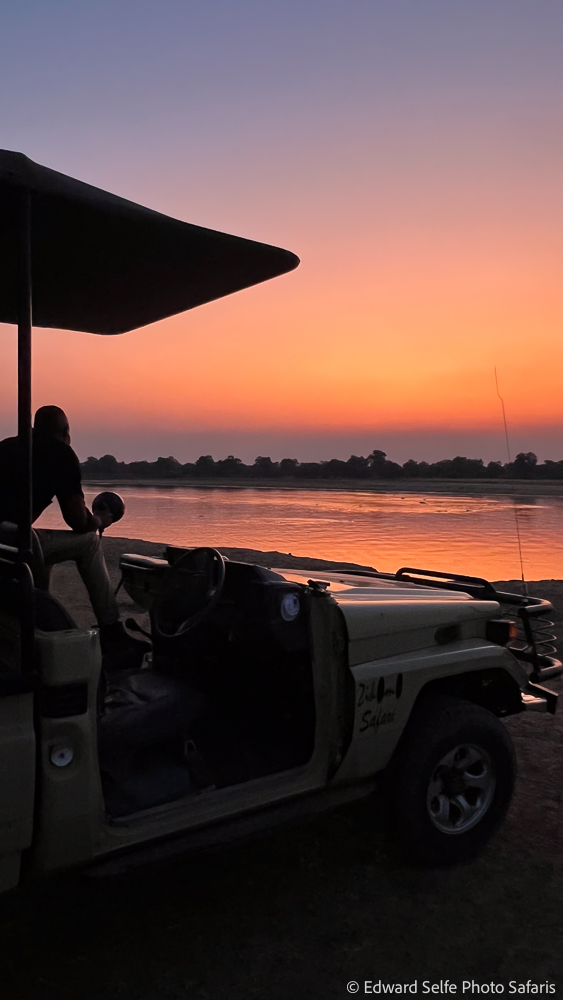
Sunset on day 1; with a new group, I often don’t take my camera on the first couple of drives as it is potentially a distraction when I am helping new guests settle into the bush. This sunset was a rich colour so it warranted a phone photo!

The first morning drive…and an epic leopard sighting. It was barely light when we found this young male. He was wandering apparently aimlessly around the open plain across from the camp, exploring scent marks (though not adding his own) and harassing guinea-fowl. We moved carefully with him, but in the end, we were able to get very close and he looked at us, exploring our vehicle and examining each of us!
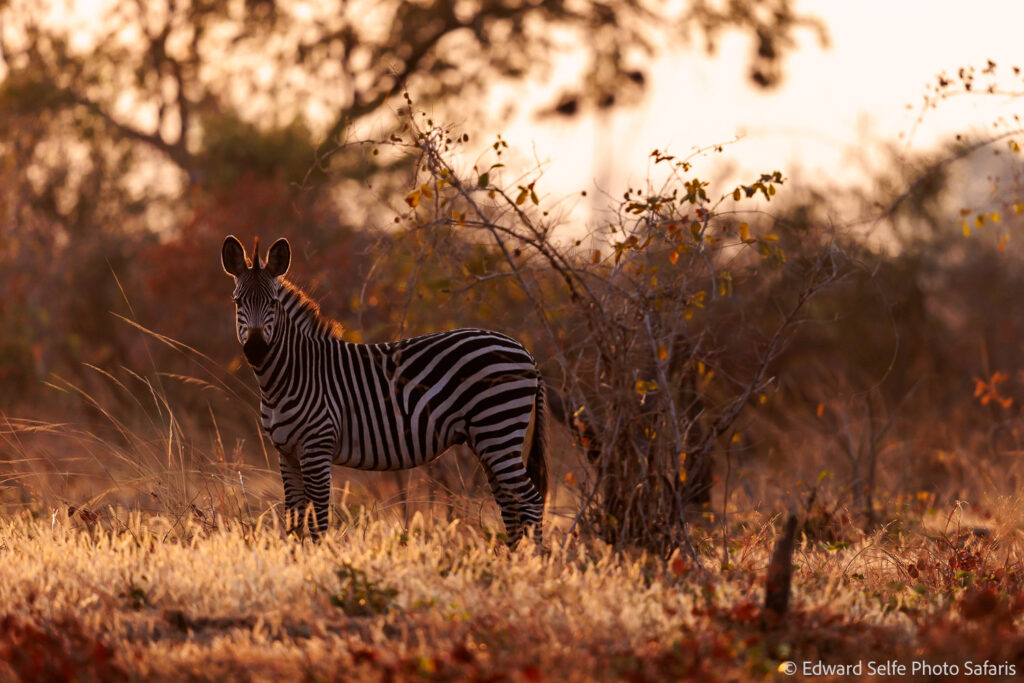
We took a drive to the inland salt pans the following morning. An unusual choice for our second full morning but there was news that lions had been seen around there the previous evening. On route, the rich red colours of dawn in that dry country were very appealing. Shooting into the light, as always, a great option.
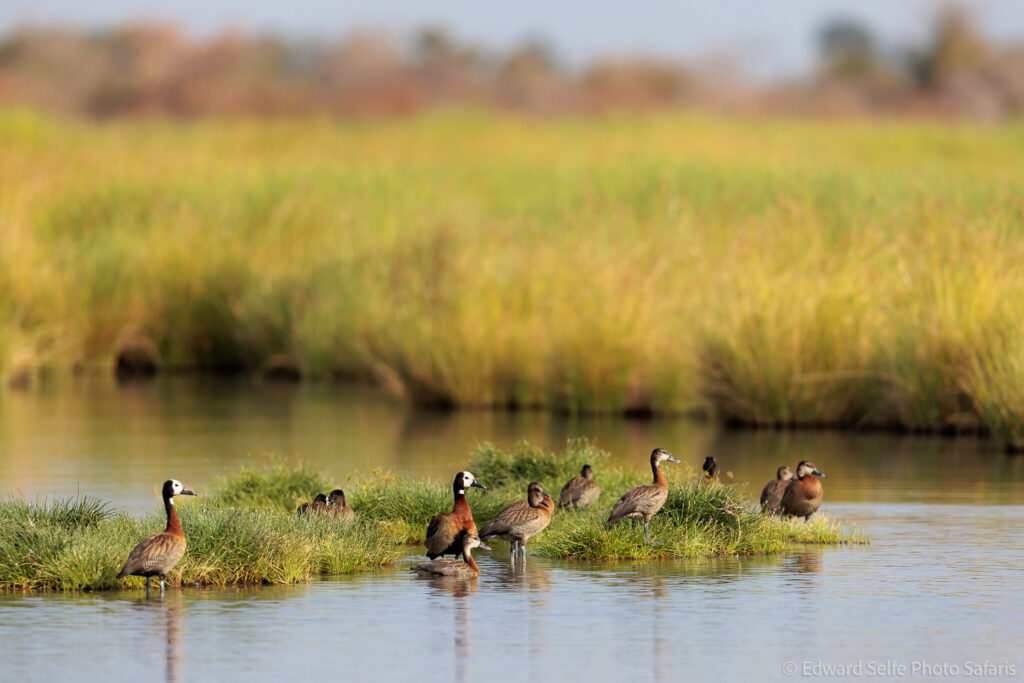
The marsh at the top of the hot spring is always worth a visit at any time. The colours, water birds and possibility of the arrival of a herd of buffalo is enticing. This time a flock of whistling ducks contrasted beautifully against the green sedges.
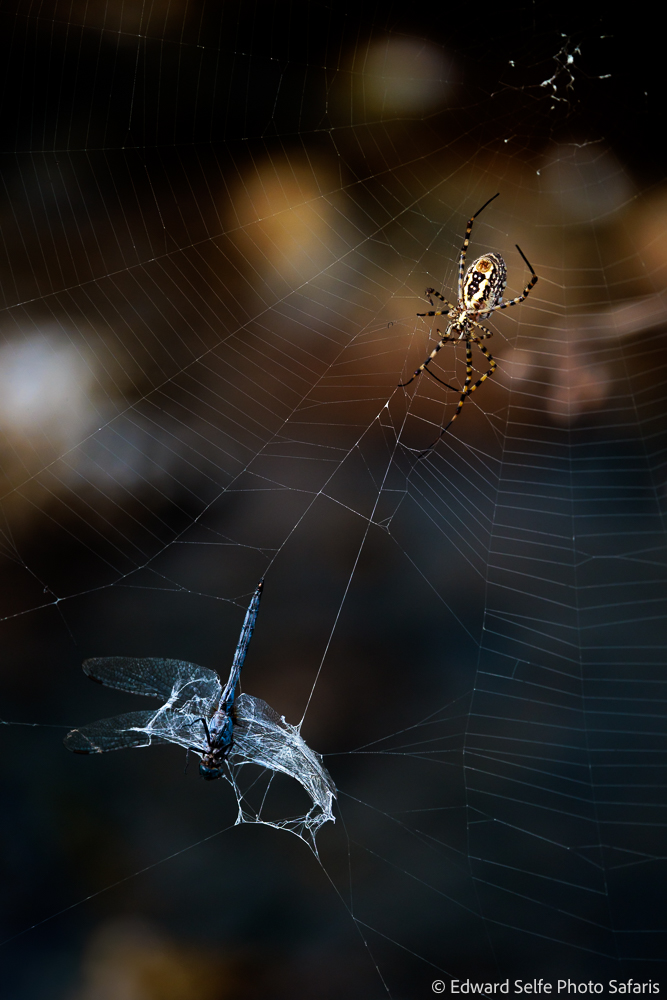
A garden spider had captured a dragonfly and was wrapping it up. Moving myself around, and asking one of the group to cast a shadow on the ground behind, allowed me to create a dark backdrop against which the web is more visible.
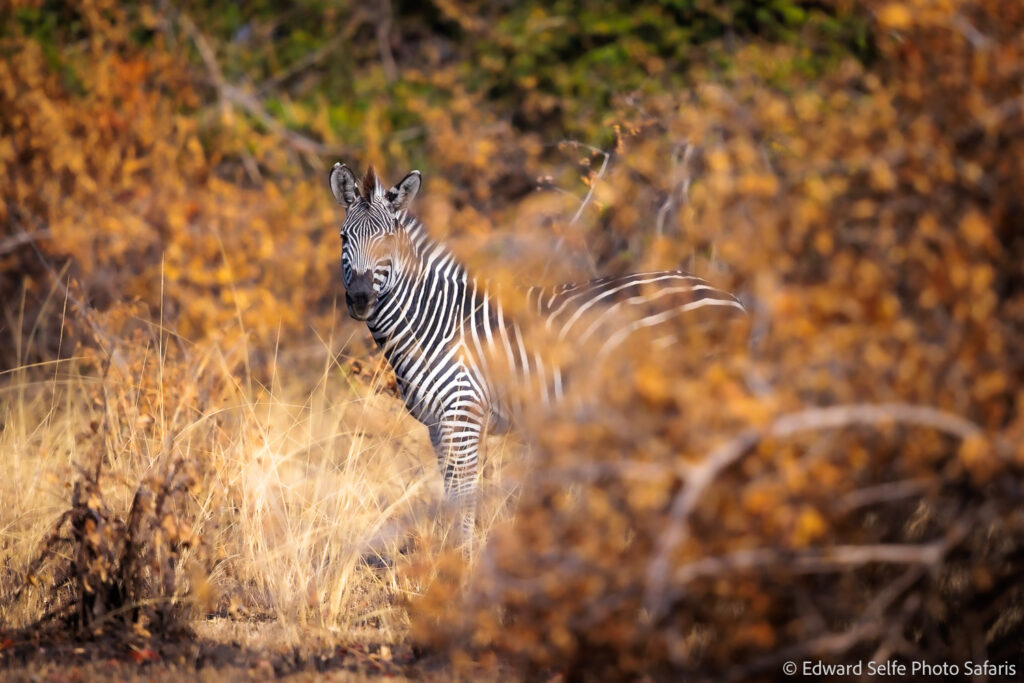
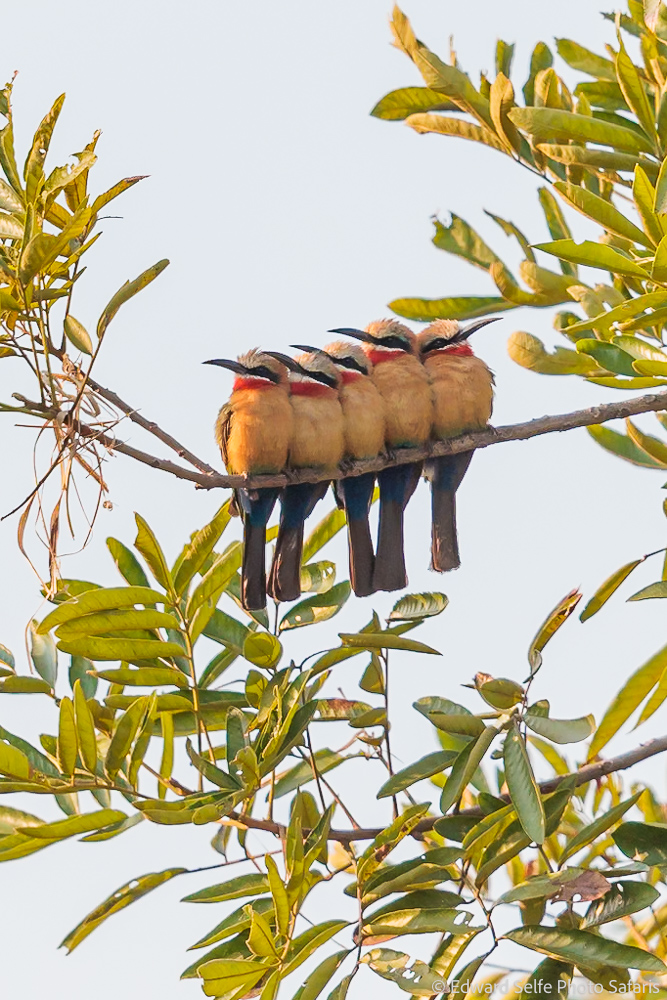
Early the next day, while searching for leopard, we spotted a huddle of white-fronted bee-eaters, yet to warm up from the night.
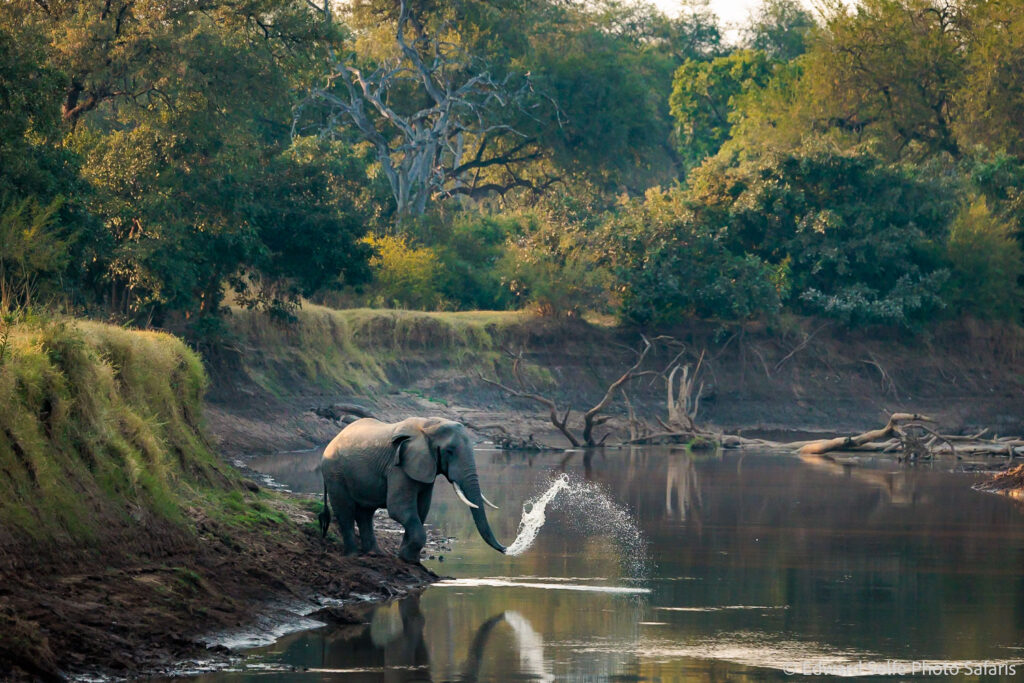
Returning from a night of foraging outside the National Park this bull elephant appeared calm but then gave us quite a significant challenge, ending with me showing a small amount of aggression in return (driving towards him a few meters) until he moved off.
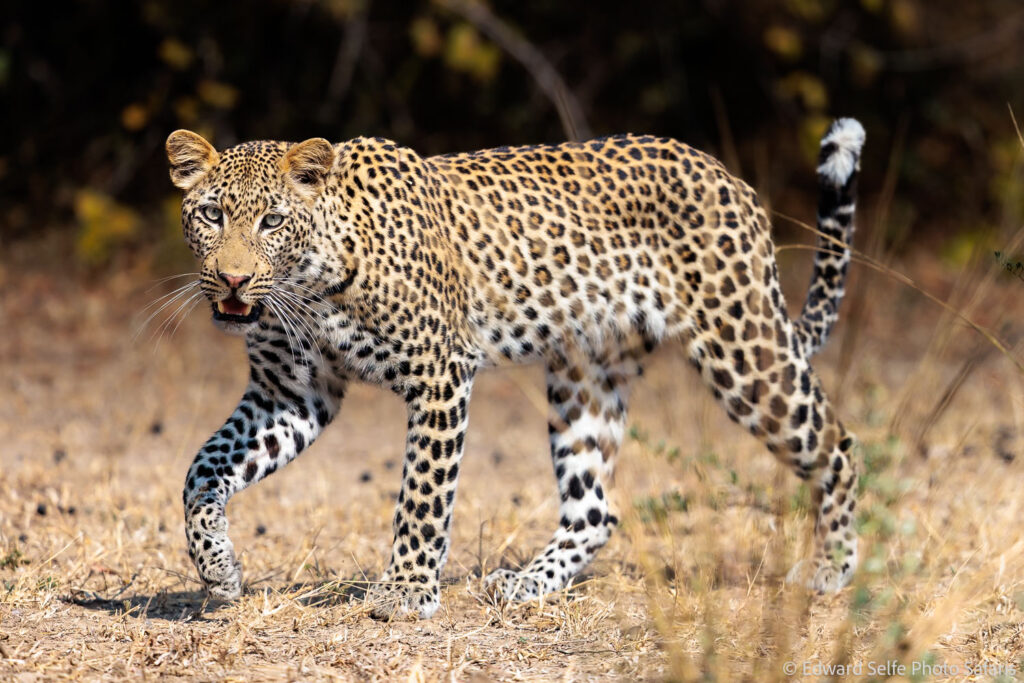
Later that morning, the leopard search paid off. Calling monkeys led us to the back end of a leopard disappearing into the bush. We waited. The two other vehicles moved on. We waited some more, and he emerged and gave us 45 mins of amazing viewing.
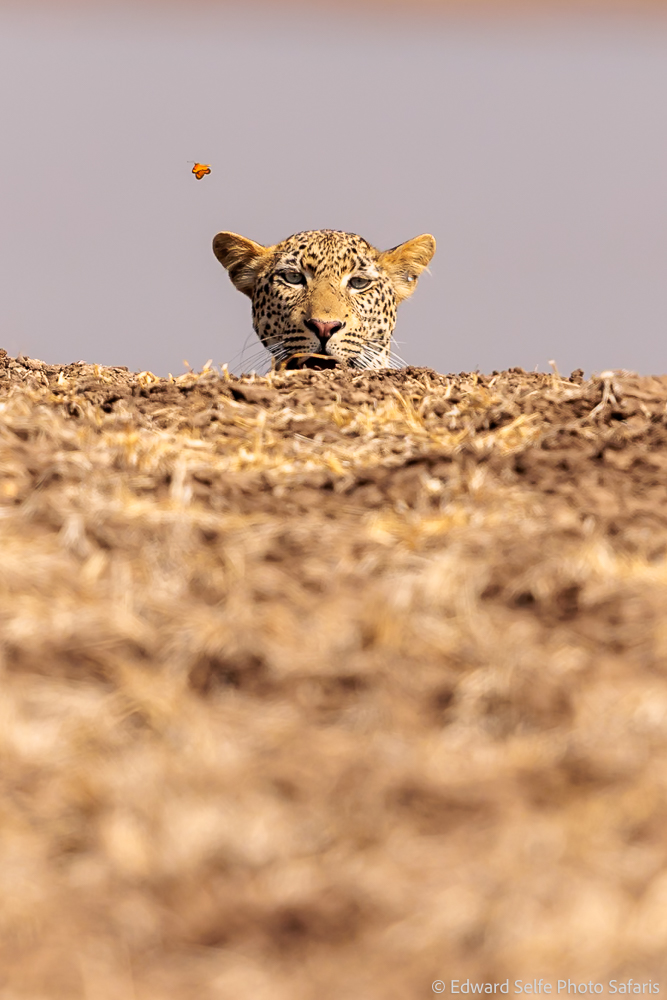
Playing games with us over the river bank.
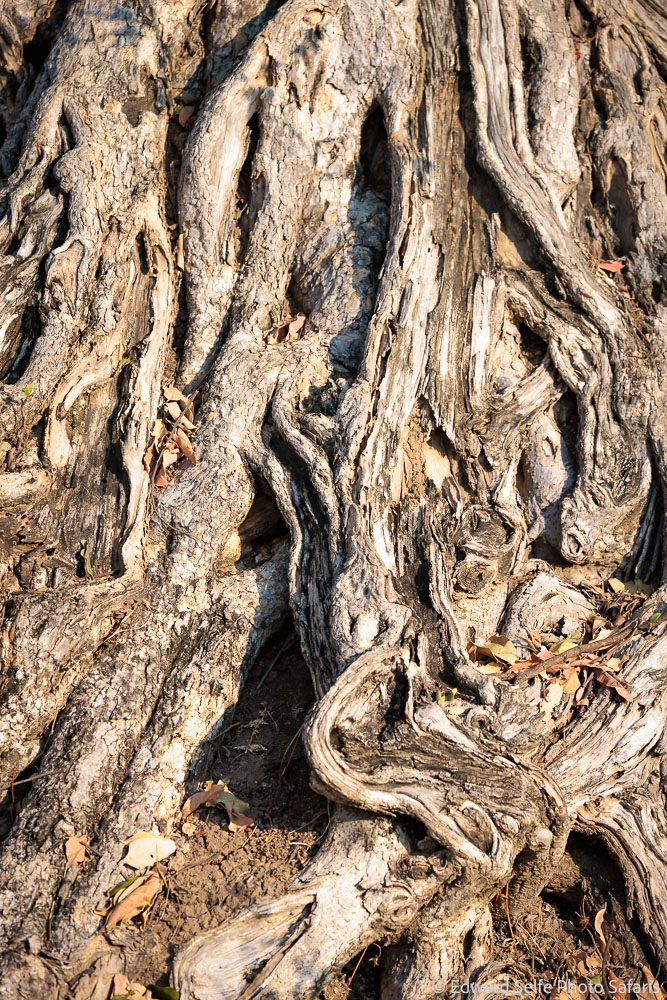
This group loved to explore, so we often stopped the vehicle and explored the area immediately around us. In this case, a large fig tree was the main attraction.
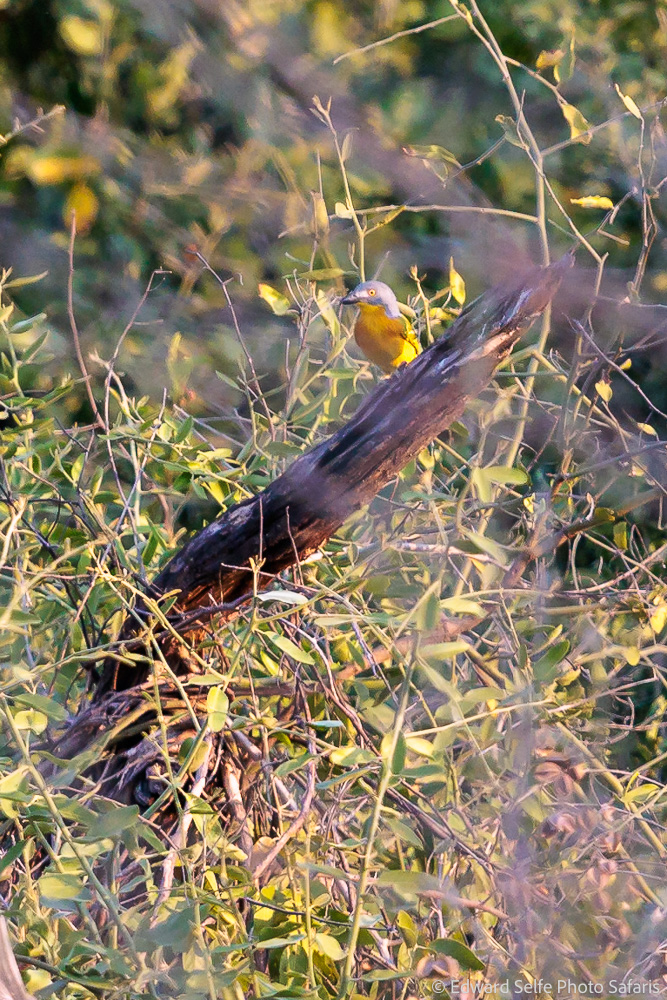
An unusual sighting of a Grey-headed Bushshrike out in the open…. They are usually a skulky and tricky bird to see well.

Returning to the salt pans the next day, very angry guinea fowl calls told me leopard, but then I thought again and concluded serval! We hunted around my spotter brilliantly noticed a serval moving away in the distance. She was injured on her rear leg and didn’t want to be watched but we managed to catch up with her a couple of times before leaving her to hunt.
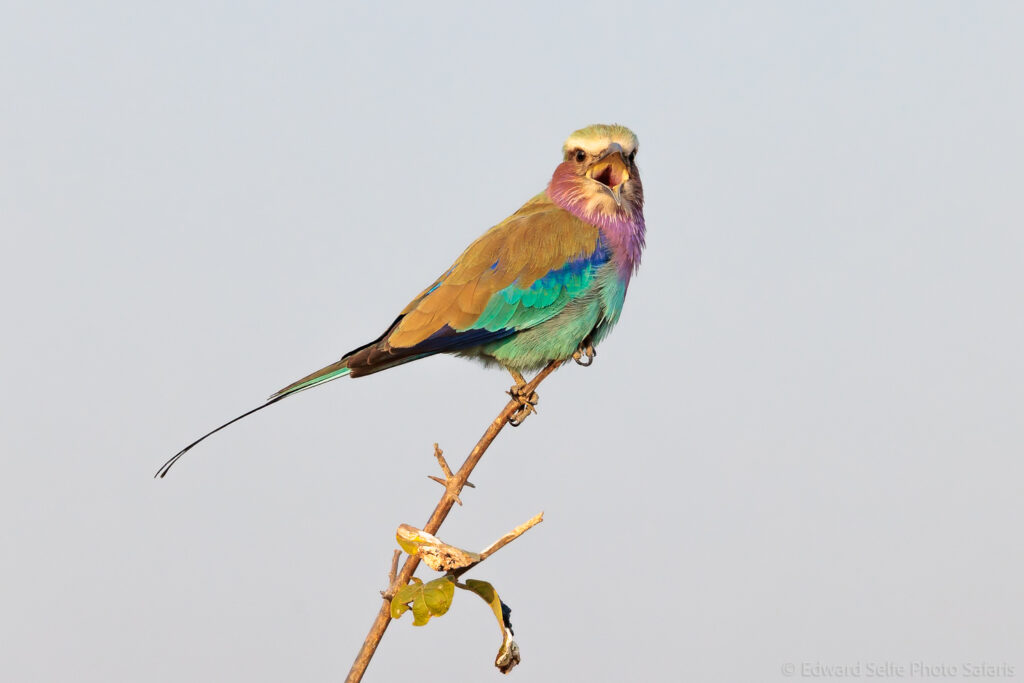
Roller chatter…
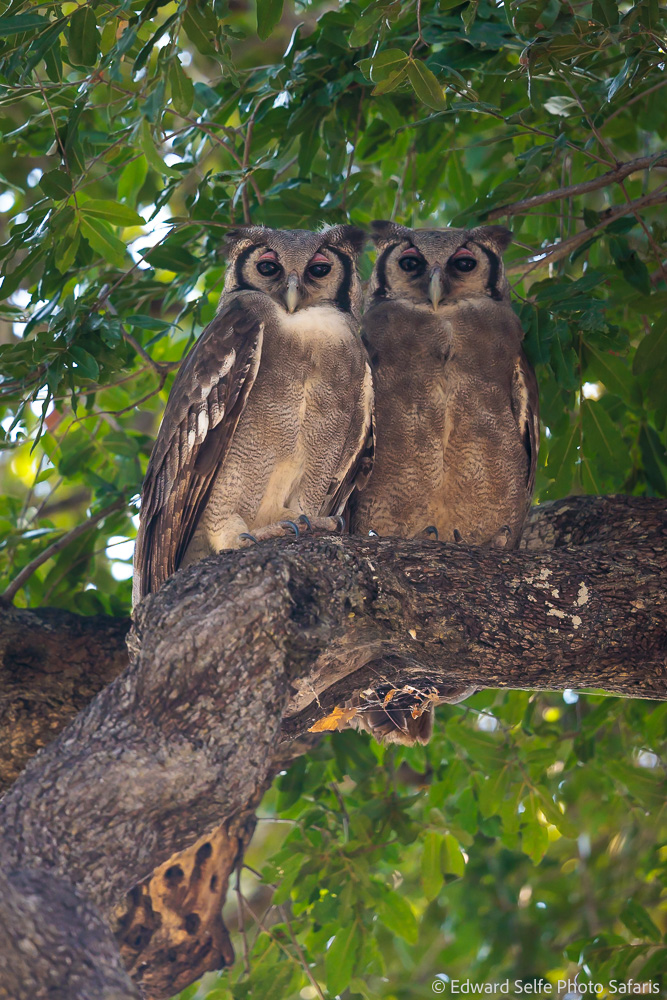
One of the sightings of the trip, a pair of Verreaux’s Eagle Owls sitting together and preening in the top of a large ebony tree. To see a lovely video of the pair, head to my Instagram page.
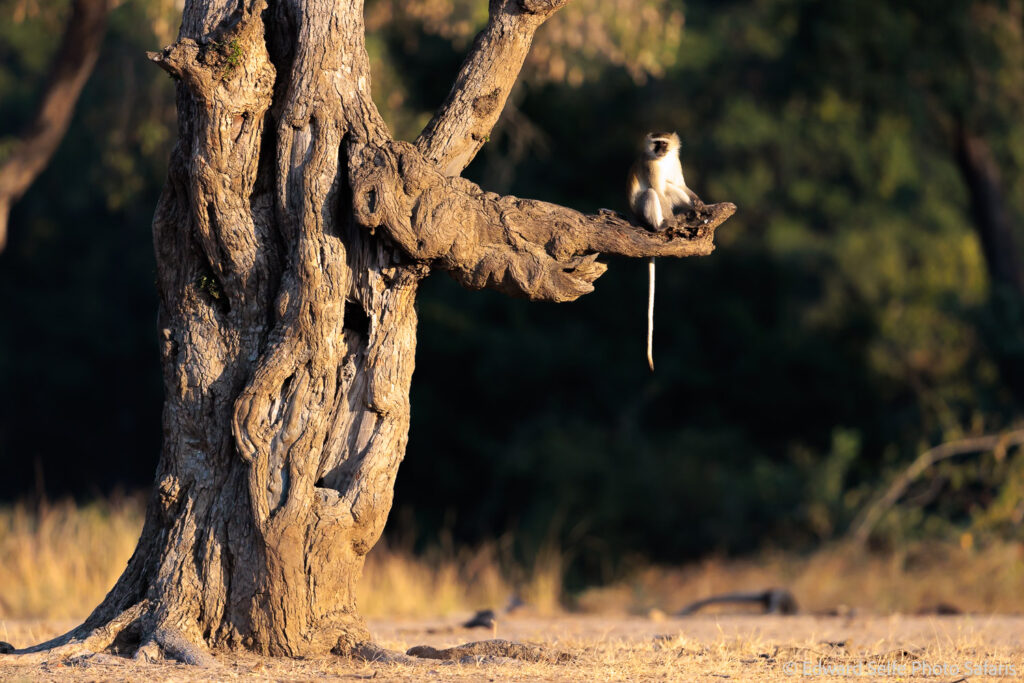
Using light and dark to create interesting images of normal, commonplace sightings the next day.
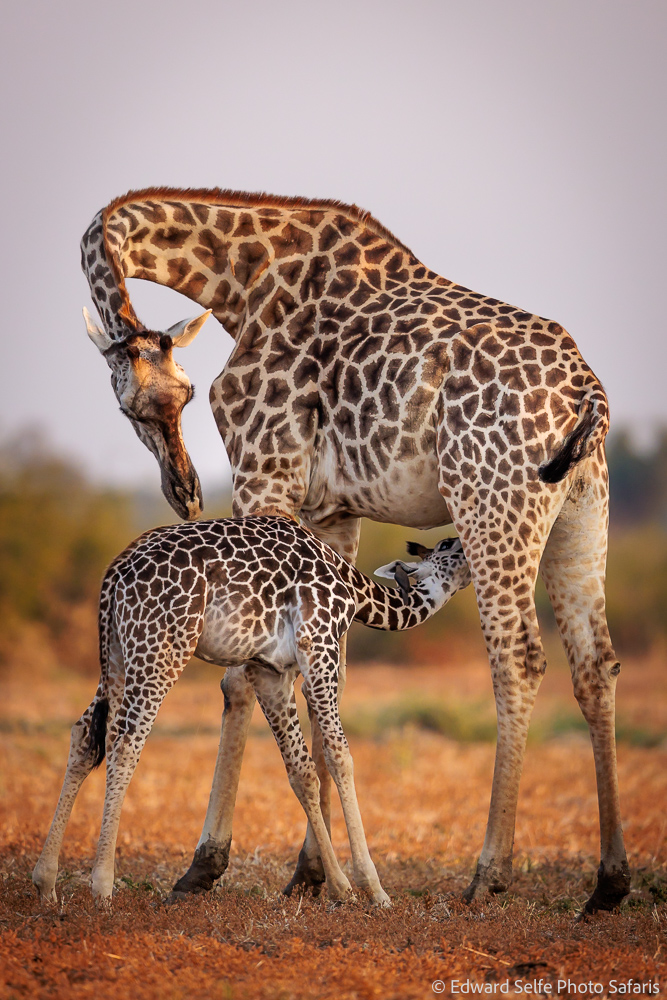
We spent much of the afternoon with a group of young giraffes. When we noticed adults returning to the area, we knew that an interaction would be likely, so I positioned for this lovely moment.
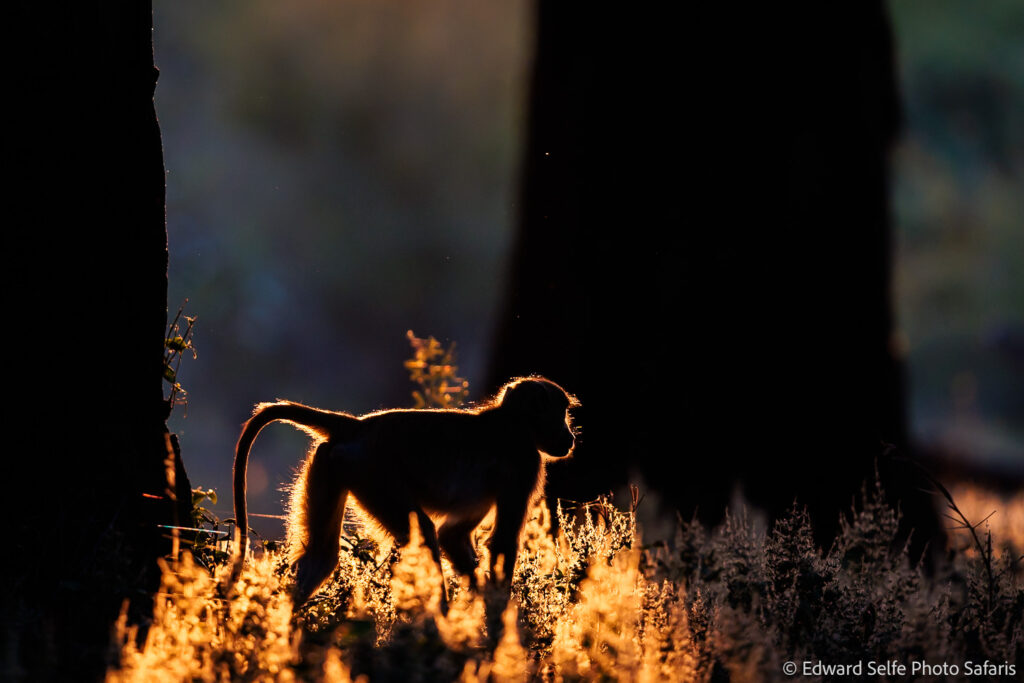
We waited a long time for this shot, and I didn’t think it would happen as the baboons were taking too long to head to the trees and the sun was disappearing fast…but just in time they crossed this beam of light…..
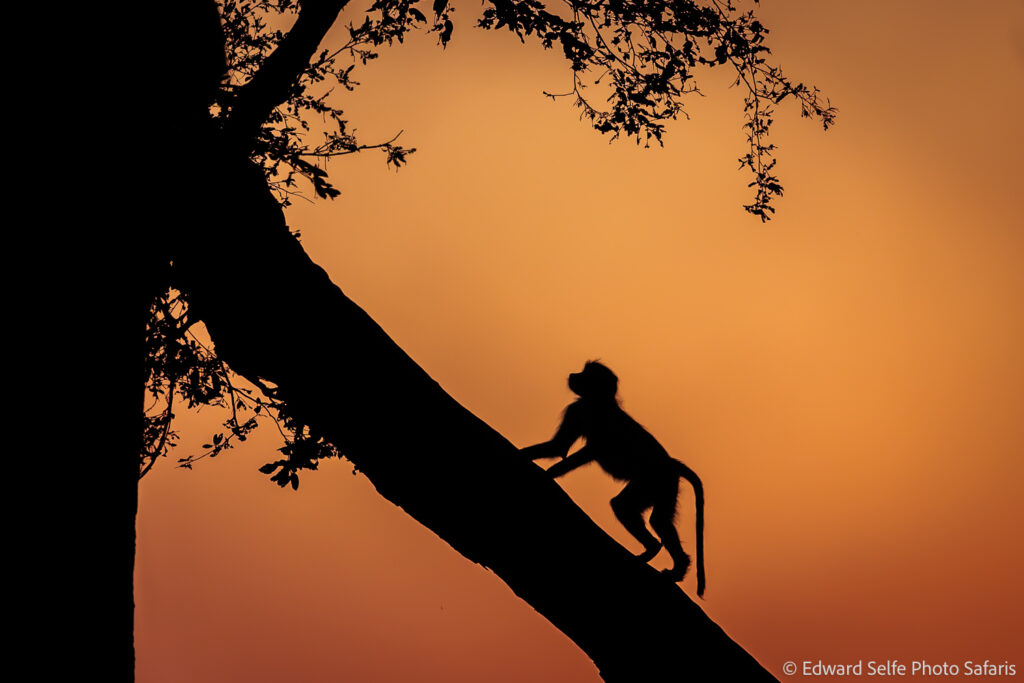
….and clambered up the tree above!
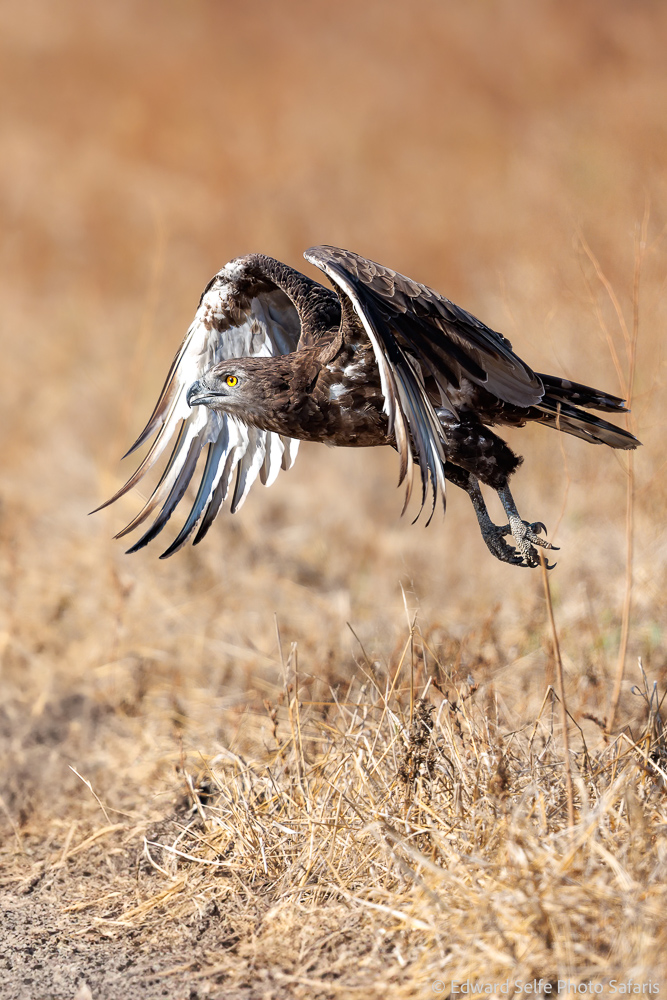
That was our final day in the Nsefu Sector, so we headed out to spend the rest of our time at Kuyenda Camp in the main part of South Luangwa. On route, we found a Brown Snake Eagle which then flew down and landed on the ground in front of us! After exploring some unseen prey, it took off and we were ready!
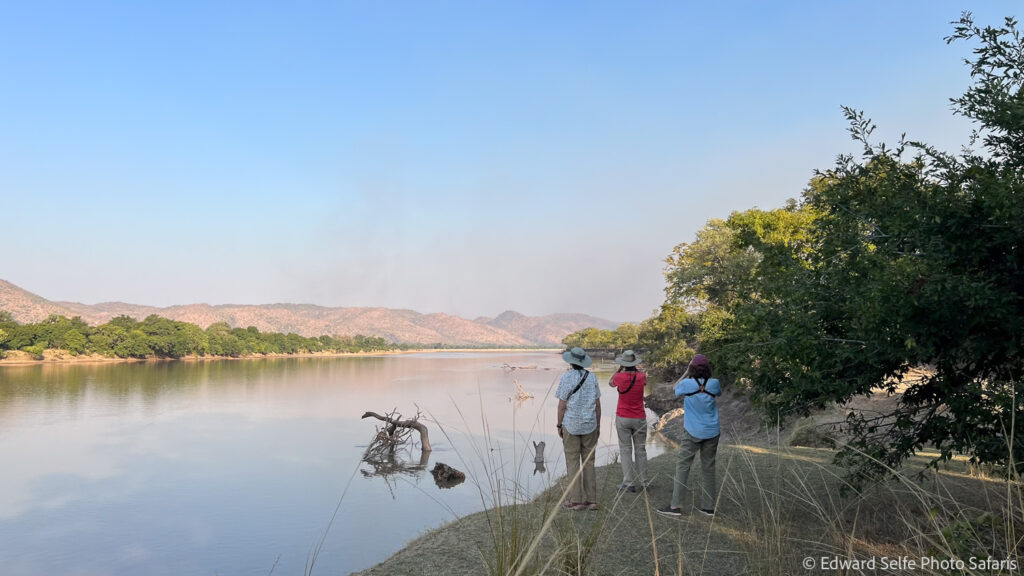
Soaking up the views down at Kuyenda Camp’s area.
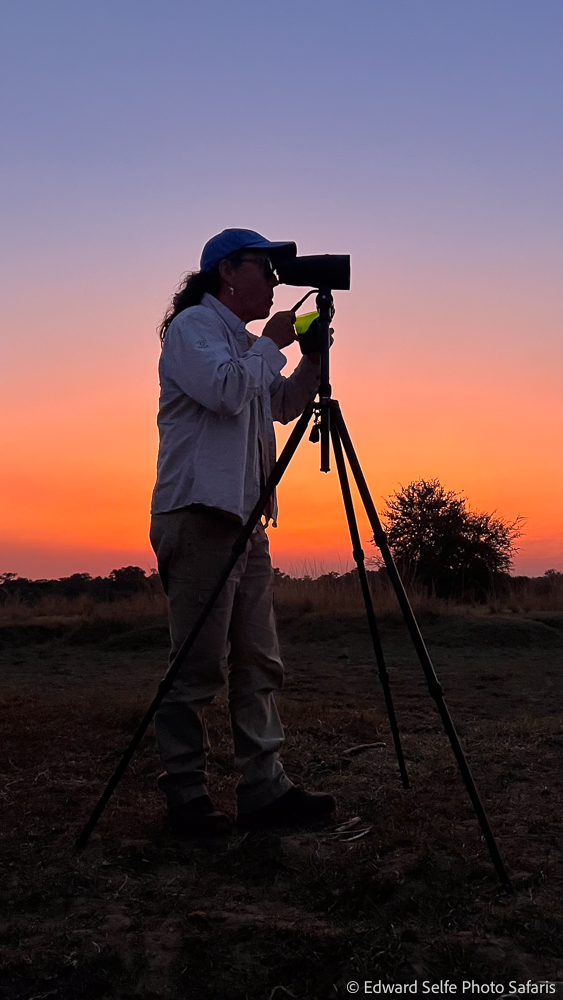
This was a common sight on this trip. Wherever we stopped, the binos and scopes would come out. Always searching, watching and exploring. Really great people to have on board.
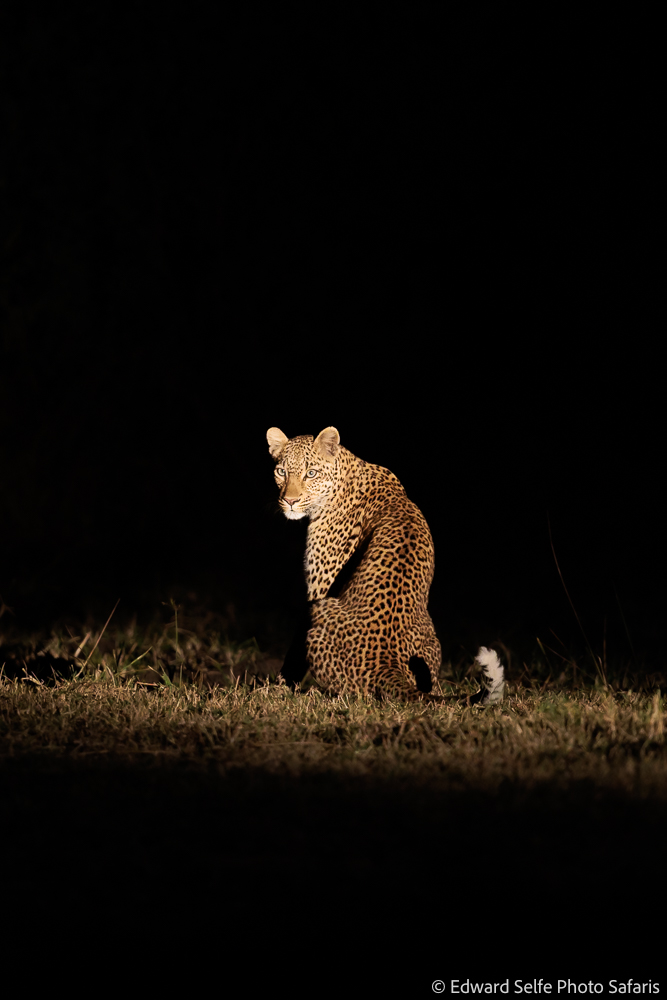
We had been searching for lions all afternoon but they were being elusive. Alarm calls drew us in and we found….a leopard. She was content to hang around and let us light her from the light of another Bushcamp Co vehicle. This looks like a hard technique, but in fact you just use the same settings as for any night photos. And remember that the settings are determined by the proximity of the light source to the subject, not your proximity to the subject. So you can shoot from a long way off. If it looks good, get shooting!
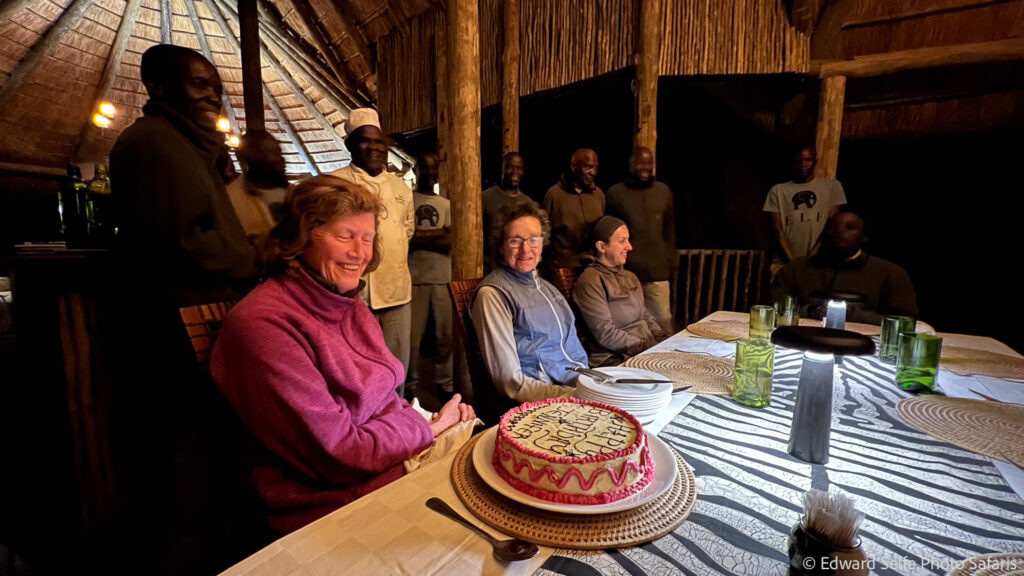
Birthdays are always celebrated beautifully by the Bushcamp Co teams!
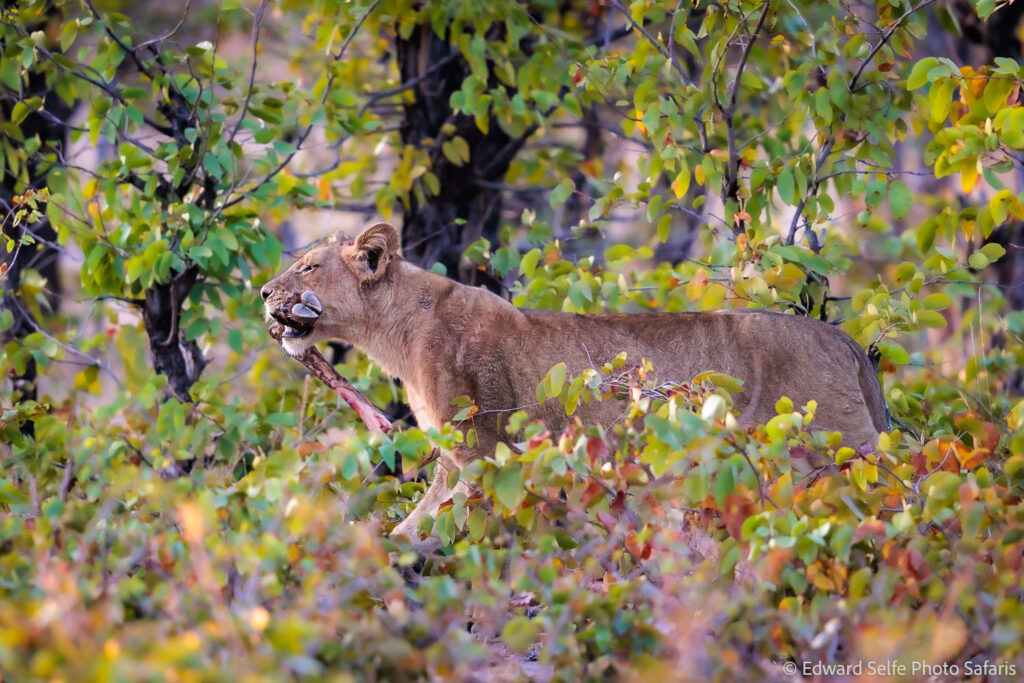
We hadn’t seen lions yet, and the group was getting a little anxious. We needn’t have worried. Straight out the door of Kuyenda the next day, the whole Manzi Pride with two males, all the females and cubs. One of my best sightings for a long time…
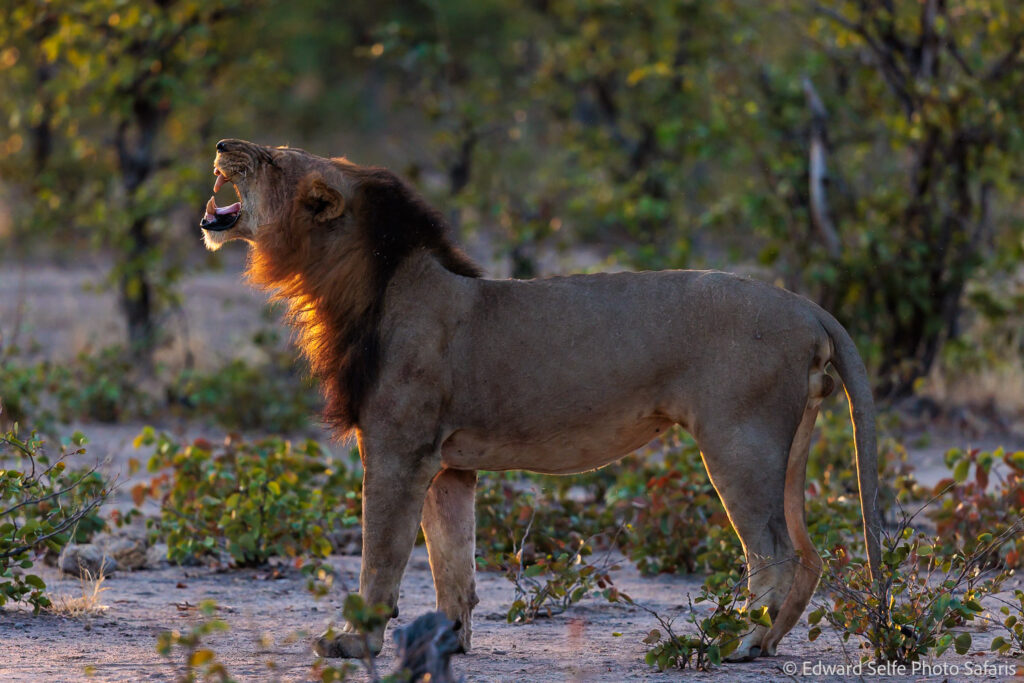
Male examining the female’s urine mark.
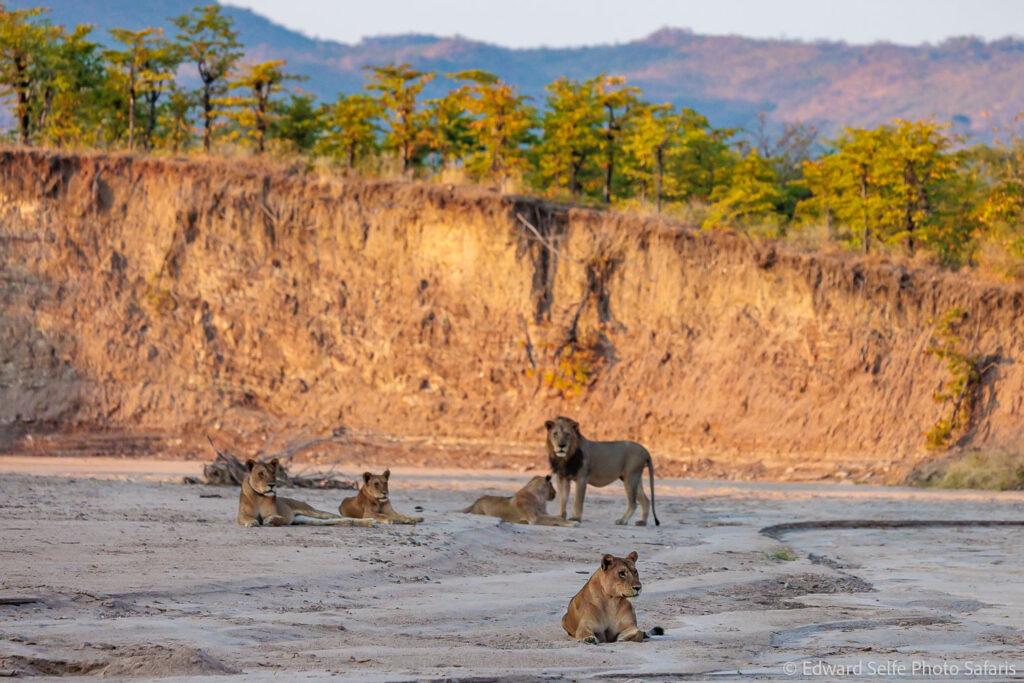
And then the pride settled down in this most scenic of locations!
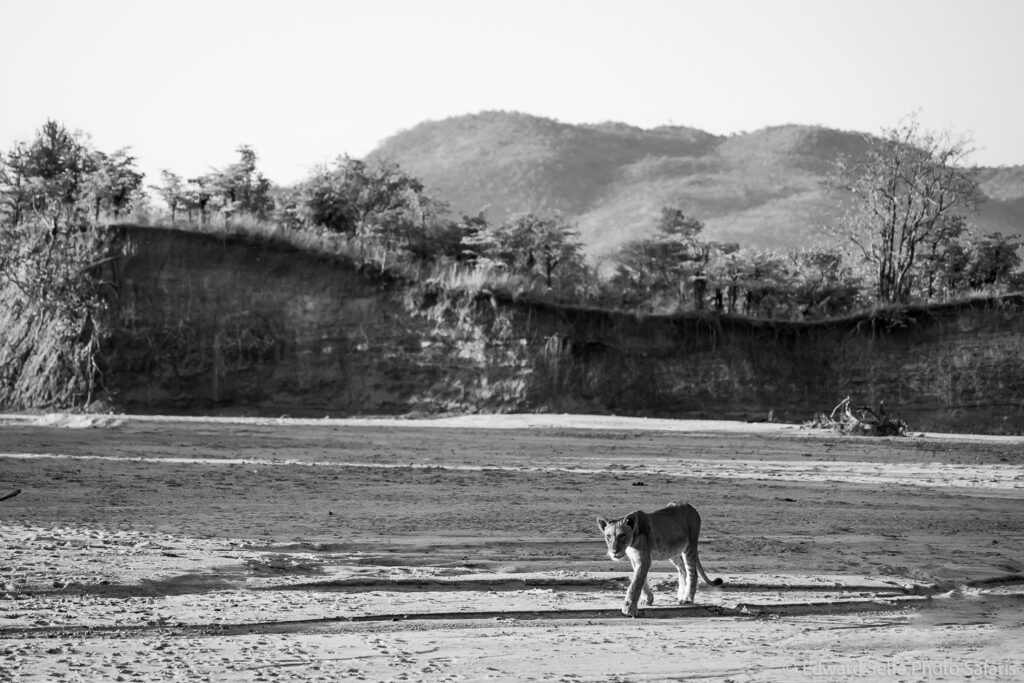
A close-up walk-by!
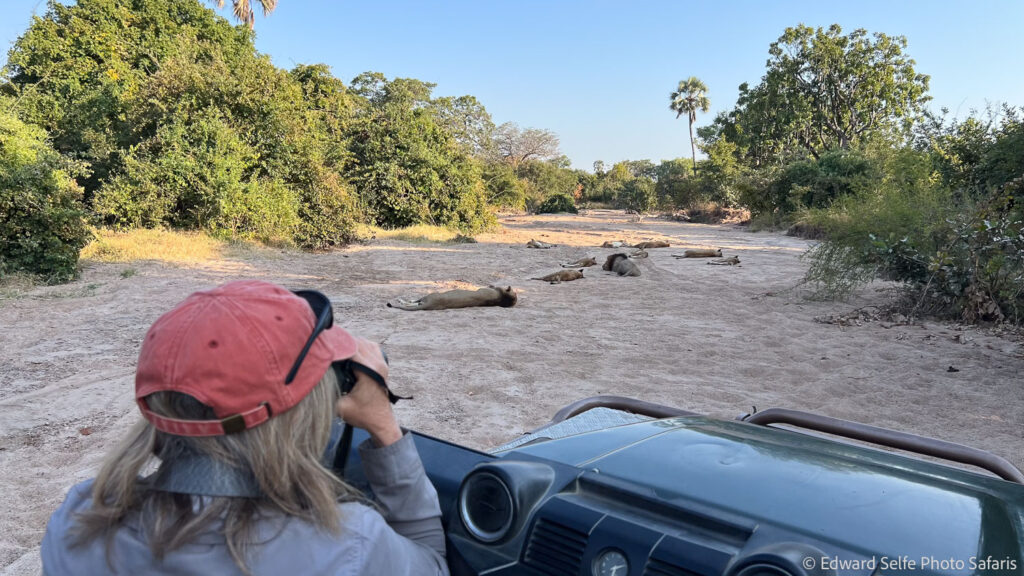
The pride settled into the sand nearby and we sat with them for a while, chatting about pride dynamics, threats to lions, lion conservation and the birdcalls in the trees nearby!
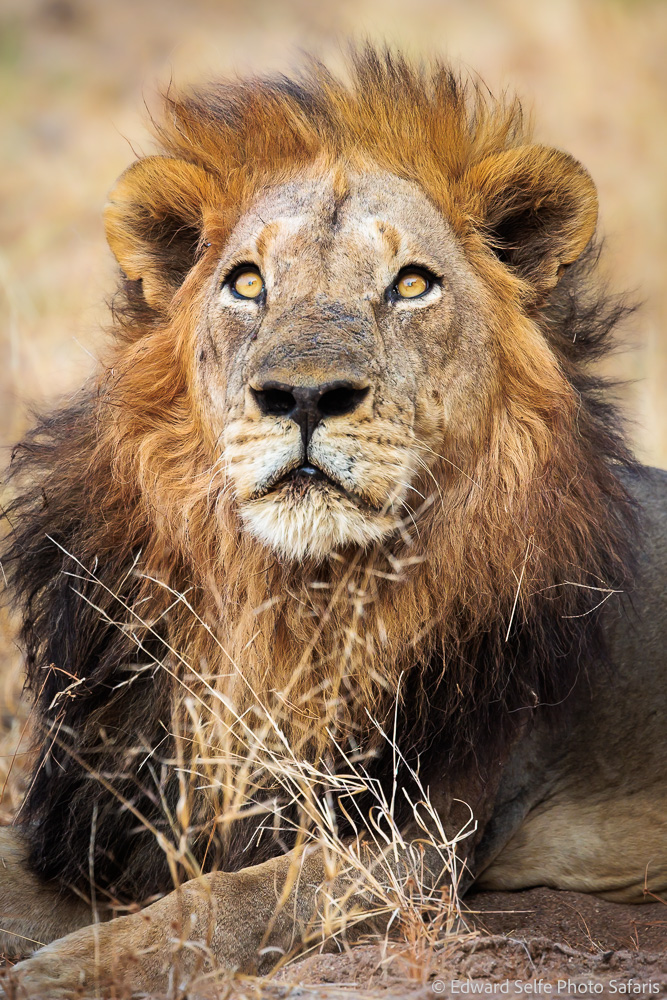
The big males emerged in the afternoon to sit and survey the area. Giraffes in the distance were a great way to keep their heads up and their attention fixed.
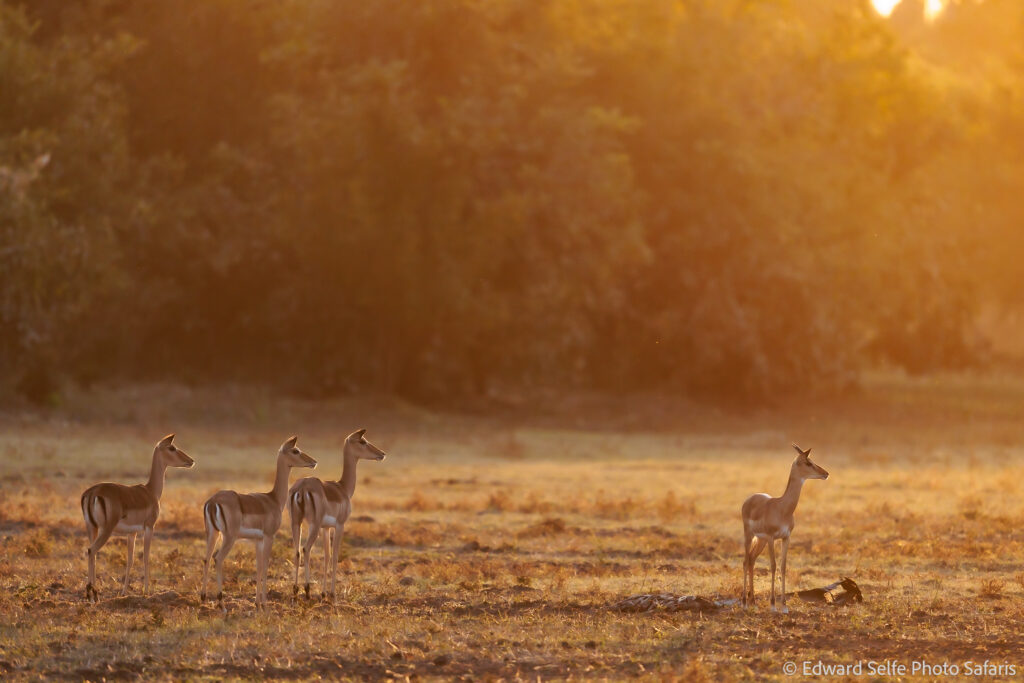
The impala were keeping a close eye on the lions too. Shooting into the light like this works well when the light is low and the background of the image is mostly shadows – this draws out the defined shapes of the antelope. It helps that they are individual shapes and not overlapping.
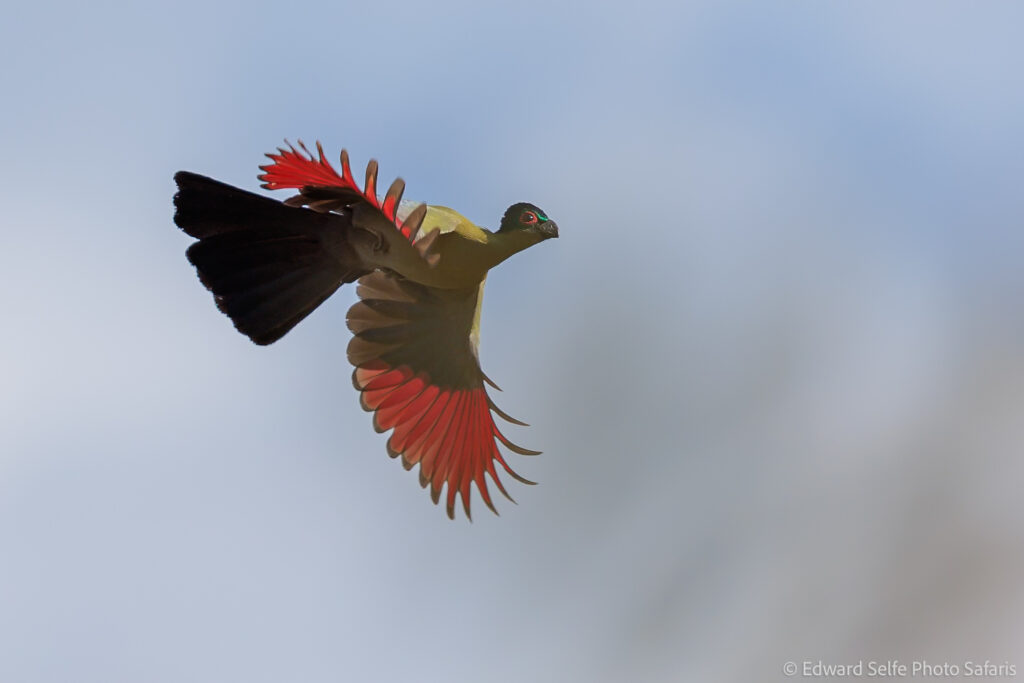
A rare low fly-past by a Purple-crested Turaco. A thin screen of vegetation in front of the bird creates the orange haze, but the incredible red turacin-pigmented wings are clear to see.
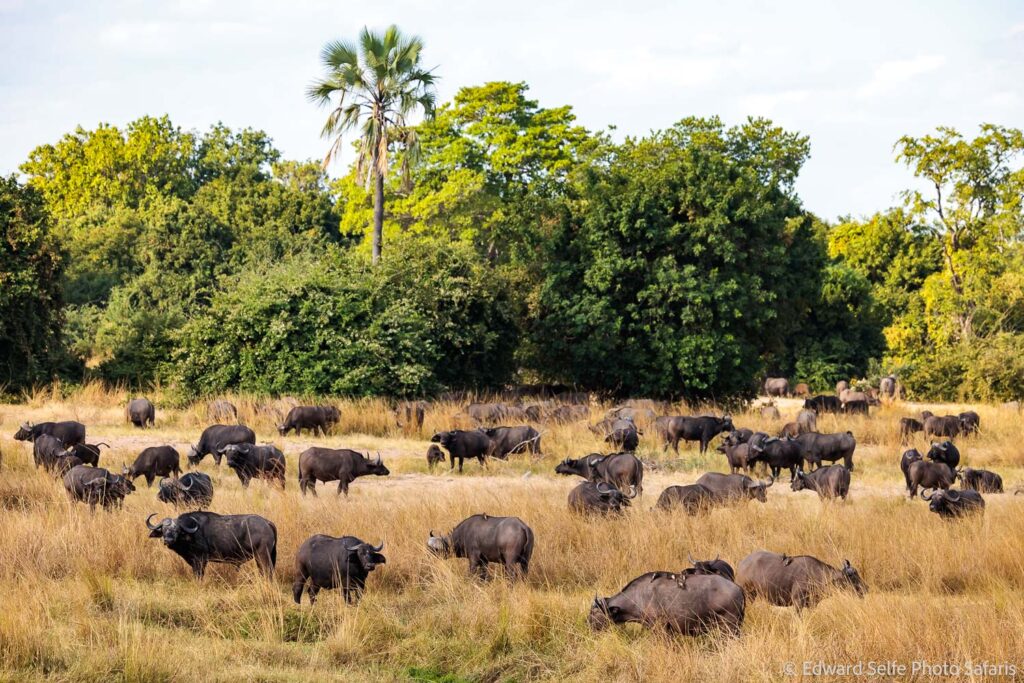
Kuyenda Camp is located alongside natural spring which seeps water all year round. Buffalo herds often camp out here, drinking water and enjoying the rich grass. The key is finding a good composition for such a sprawling mass of dark bodies. A wide shot like this, with no half-bodies at the edge, and a palm tree above to fill the frame works nicely.
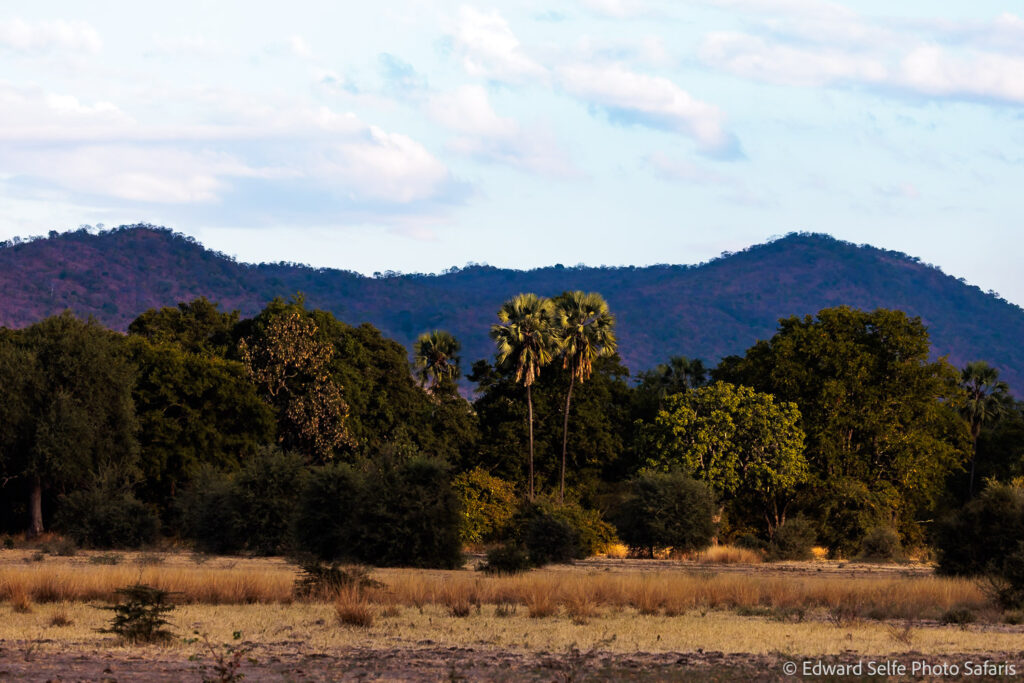
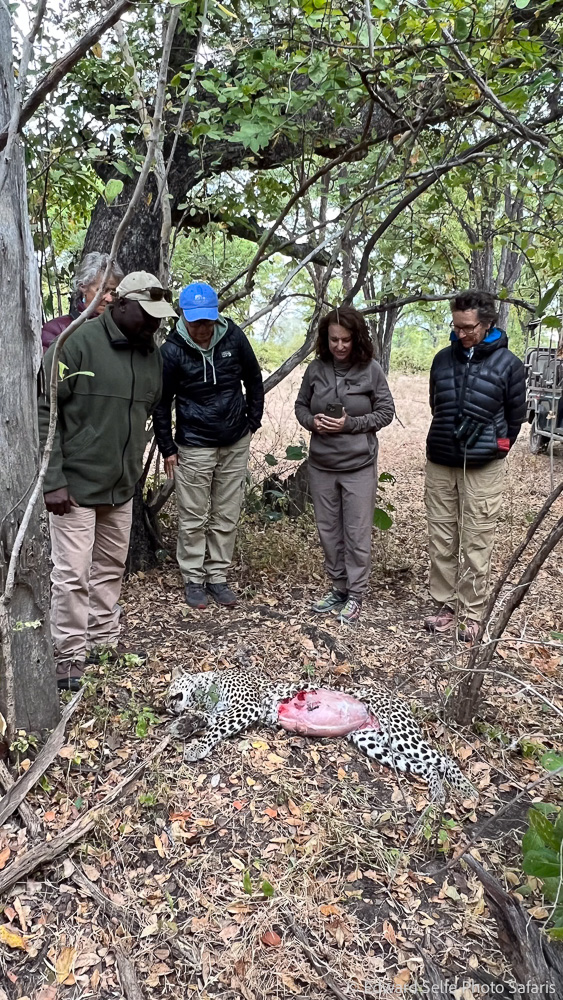
This was one of the most interesting – if somewhat sad – sighting of the trip. Early in the morning we heard baboons barking in the thick Mopane woodland along the river. They barked frantically before settling down to occasional barks; I suspected a leopard cub which had appeared and then gone back into cover. We searched around but couldn’t locate anything; I would normally have moved on, but something bugged me about this. A little more searching and I spotted the distinctive pattern markings of leopard coat under a small tree. Quickly it became clear that the leopard wasn’t moving and wasn’t alive. Clearly the baboons had spotted the leopard as the light rose and then settled down when they realised the predator wasn’t moving. We checked carefully around to ascertain that there was no risk, and to be sure that the leopard was really dead, before getting down with the scout to have a look. The leopard had been killed by another leopard, shown by the bite marks on the neck and the plucking of the hair on the body, which is a characteristic of leopard feeding behaviour. Why a male leopard would kill a smaller female is a little unclear but probably the female had a prey item and the male ambushed her before she could drop it. Such intra-specific competition is common in high-leopard-density areas such as the Luangwa.
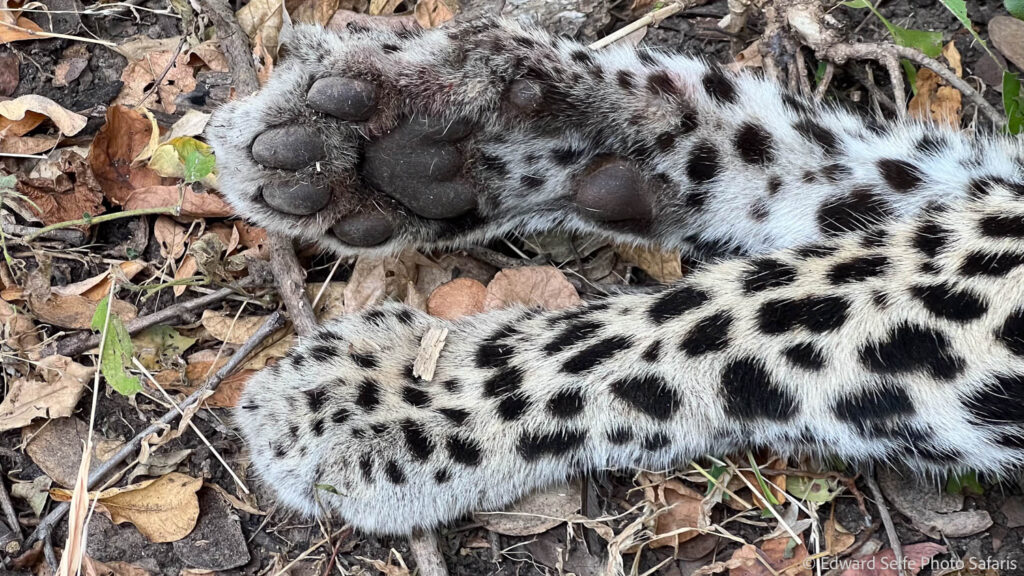
It’s not often we get the chance to study a predator at such close range….
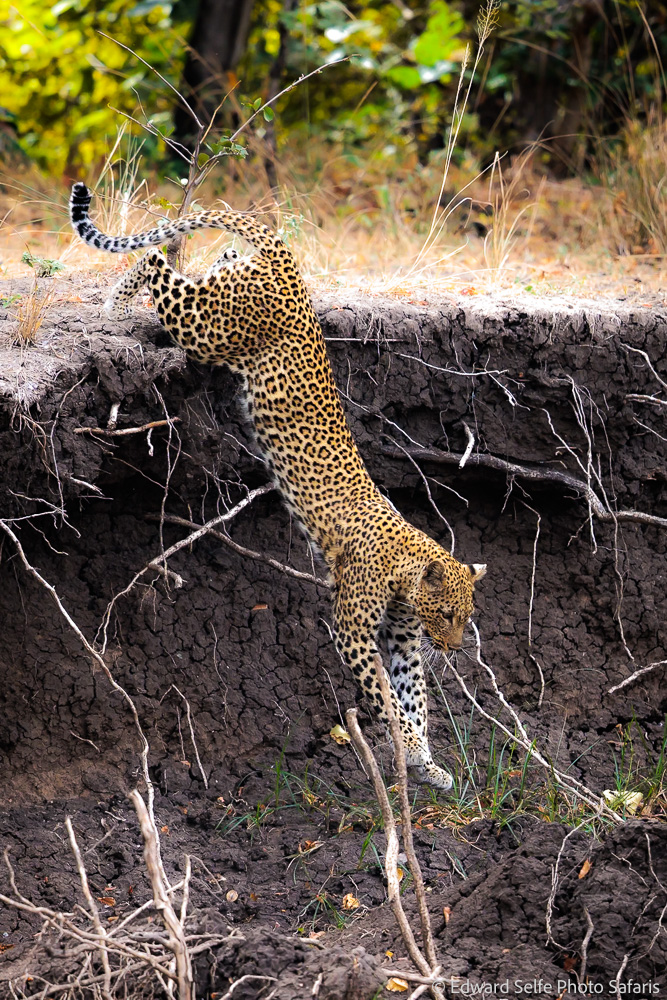
Luckily our next leopard was alive and kicking, or jumping. We spent 45 minutes with her….
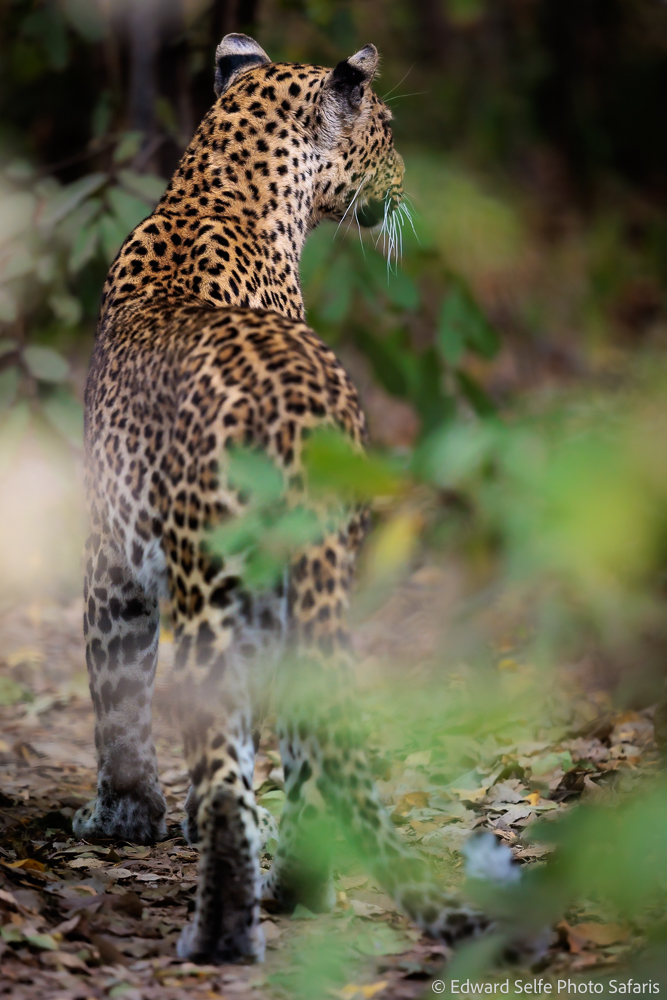
…before she melted into the bush.
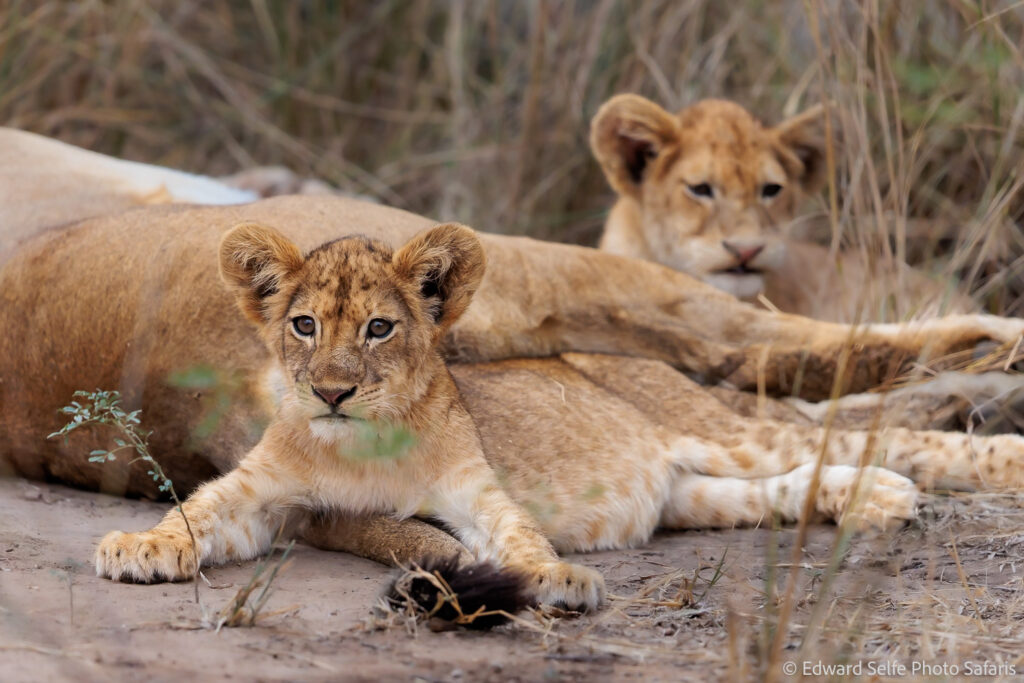
We’d opted to do an all-day safari that day and I was thrilled to find the Chamilandu Pride close to the southern end of our drive. They had 2 very small cubs of about 3 months old, perhaps very recently introduced to the pride of females.
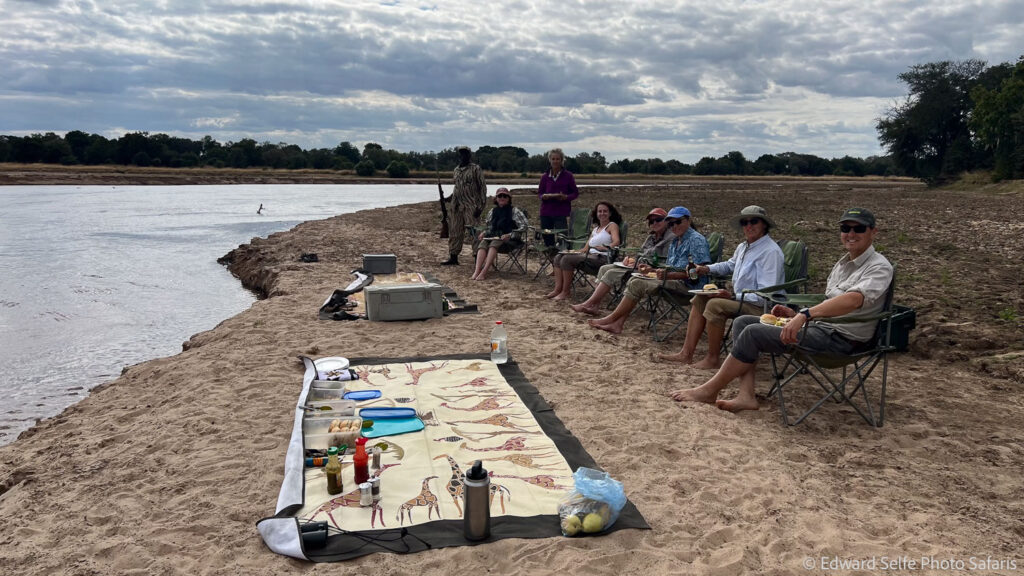
Lunchtime along the Kapamba River; in the cool months of June, it’s possible to have lunch out in the sun in the middle of the day! The joy of mid-winter.
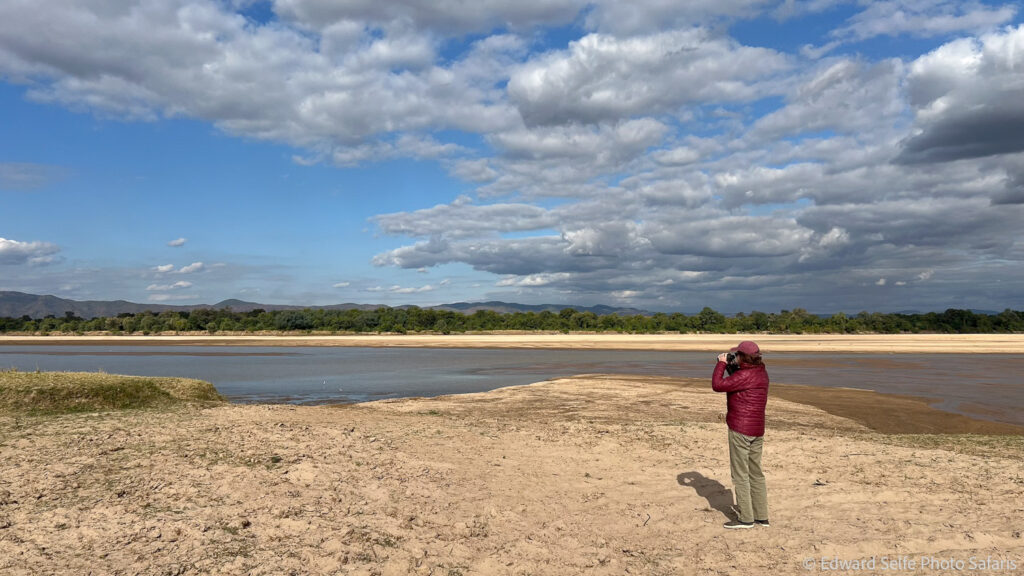
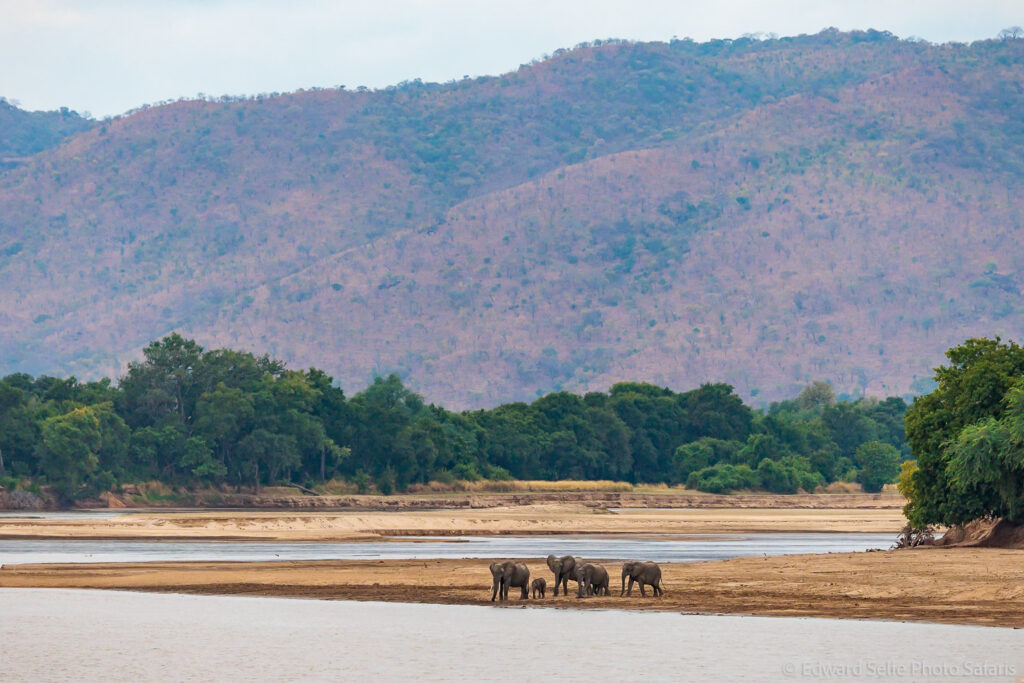
The famous elephant river crossing point close to Chamilandu Camp.
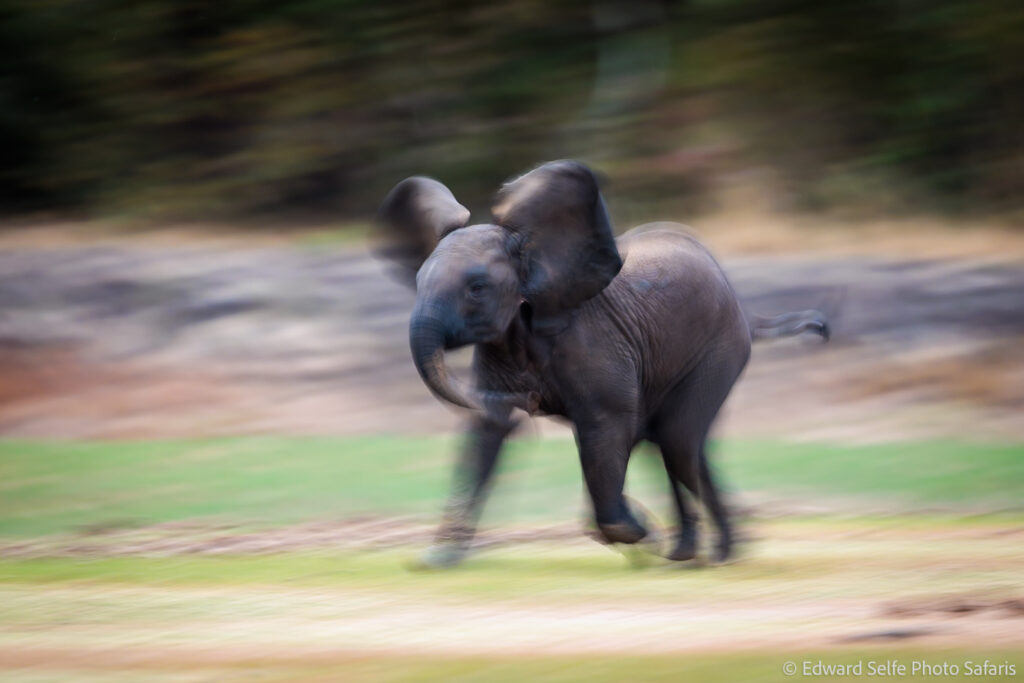
An intentional blur shot made with a slow shutter speed; when the light is poor, it’s sometimes better to go for a creative option like motion blur than to shoot an underwhelming image in flat light.
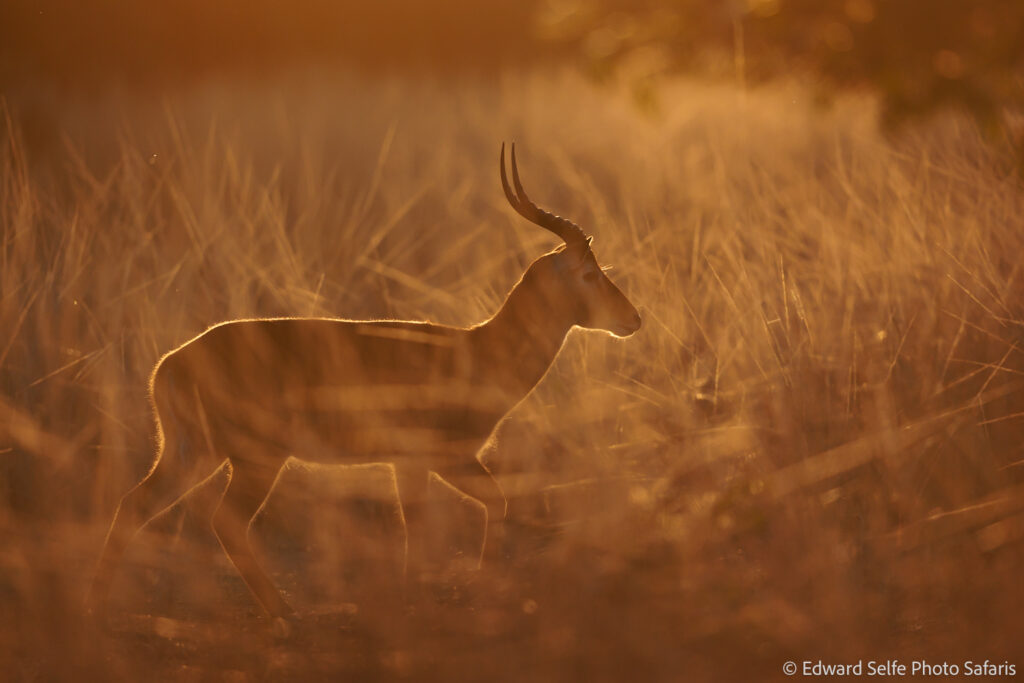
The last morning gave us a brilliant sunrise. With no predators around we spent the time with this herd of puku which work well for sunrise shots, and especially males where the horns glint in the light.
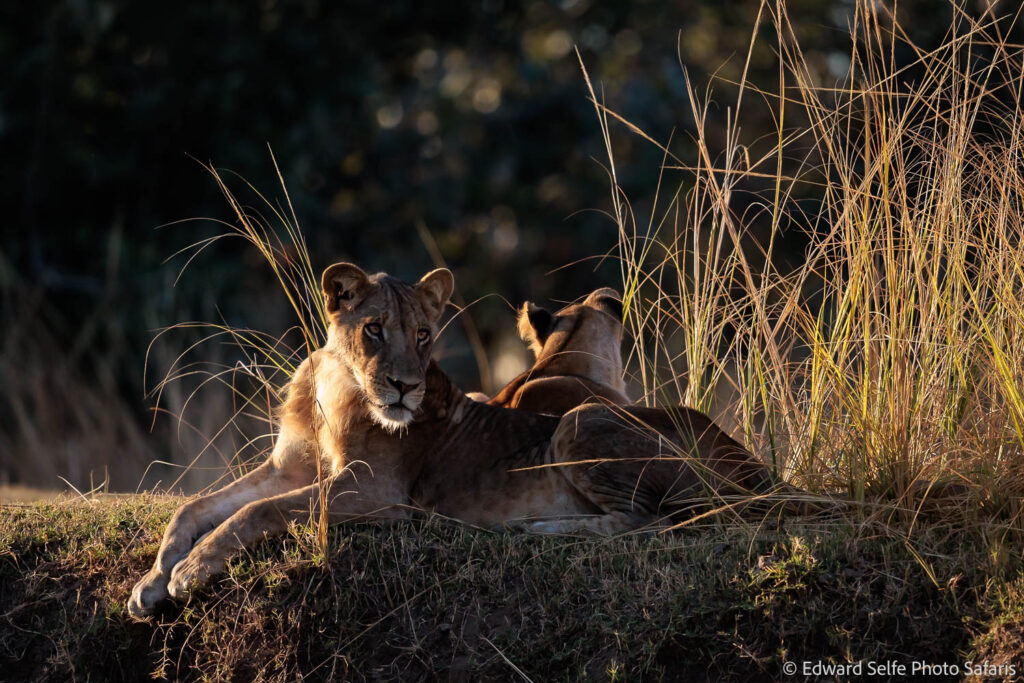
These lions were resting on the bank of a dry river. Their pride is not doing so well and they are very thin. Though at this time of year there is a good chance that a hippo will succumb to the nutritional squeeze and they can scavenge a good meal. We wish them well.
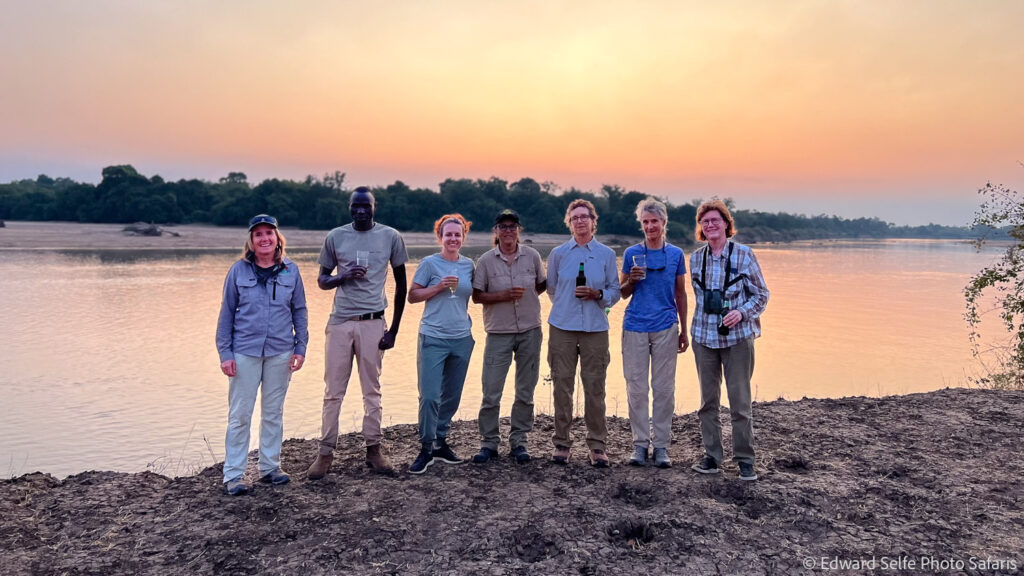
What a great group. We had so many interesting sightings and I enjoyed their company throughout. We talked about a future trip to Botswana in 2025 or 2026 which I really look forward to! Thank you to them for all their enthusiasm and energy, early mornings and fun.
And thanks to you for reading to the end.

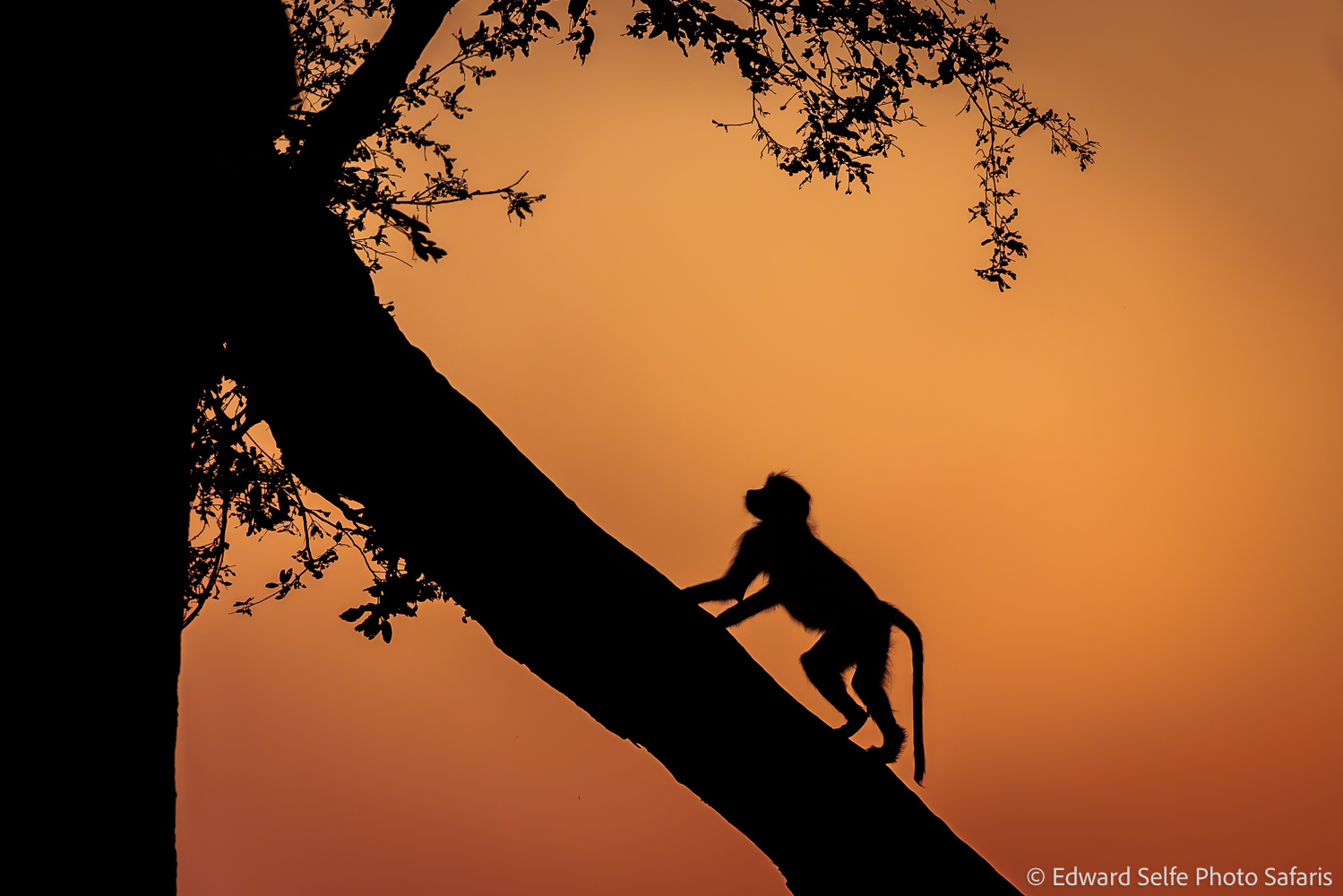
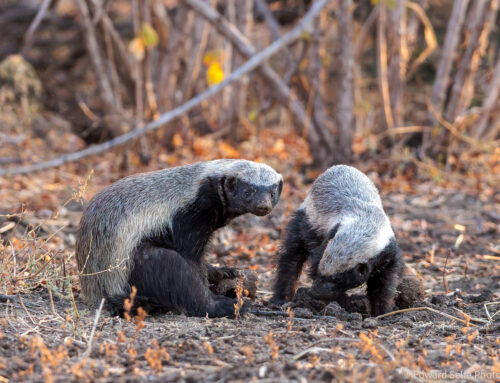
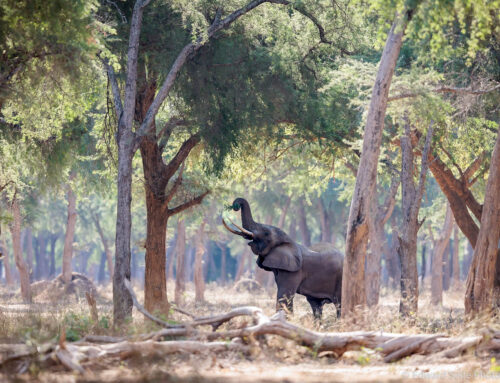
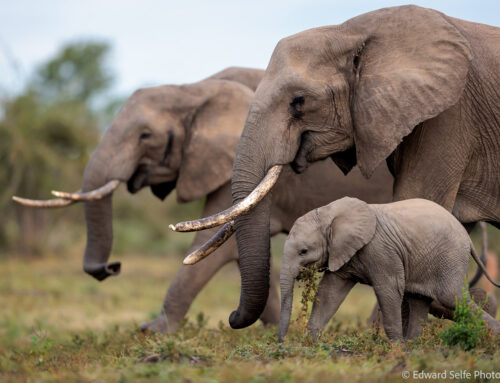
Leave A Comment